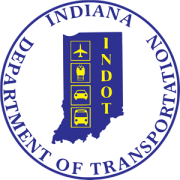Frequently Asked Questions
80/94 FlexRoad is an Indiana Department of Transportation project to study innovative solutions to improve traffic flow and safety along Indiana’s busiest interstate corridor. It will identify best solutions for the I-80/I-94 corridor (Borman Expressway), from I-65 in Indiana on the east to IL 394 on the west.
The 80/94 FlexRoad project area extends over 14 miles from the IL 394 interchange in Cook County, Illinois to the I-65 interchange in Lake County, Indiana.
The project is expected to include Transportation Systems Management and Operations (TSMO) strategies to improve traffic flow and safety. TSMO strategies under consideration include dynamic shoulder lanes, variable speed limits, ramp metering, lane control and queue warning systems. Other possible improvements include improved signage, event management and interchange improvements at Broadway/I-65 to reduce backups and increase capacity.
TSMO is a set of strategies to maximize the efficiency and safety of existing transportation systems. They are typically deployed as a set of flexible strategies that can be used throughout a corridor.
The 80/94 FlexRoad corridor is a developed area with limited right-of-way available for improvements without major impacts to businesses and homes in the area. These constraints are one of the reasons why innovative solutions are being identified.
Each of the four alternatives recommended for further evaluation in the NEPA study includes a set of strategies aimed at improving reliability and safety.
TSMO strategies are innovative solutions that work within existing transportation systems and focus on possibilities largely within the existing footprint of the corridor. Benefits include smoother and more reliable traffic flow, improved safety, less wasted fuel and cleaner air, along with a more efficient use of resources – both funding and roadway facilities.
TSMO strategies under consideration include:
- Dynamic shoulder lanes use the shoulder for additional capacity during peak congestion or in response to incidents.
- Event management strategies reduce congestion by improving operational and maintenance practices – like incentivizing tow companies to remove disabled vehicles quickly and safely or increasing Hoosier Helper program staff.
- Improved signage increases driver knowledge and awareness of current traffic conditions, helping to reduce crashes and inform motorists.
- Interchange improvements to the Broadway/I-65 interchange would reduce backups and increase capacity for drivers exiting to Broadway or I-65 SB.
- Ramp metering controls the frequency of vehicles entering the roadway to match road capacity, leading to improved merging and reduced crash rates.
- Variable speed limits adjust based on real-time traffic roadway incidents, work zones and weather conditions, helping to reduce congestion.
- Dynamic lane control closes or opens individual traffic lanes to provide advance warning of closures or incidents using signals above each lane.
- Queue warning uses real-time displays of messages alerting drivers that slowdowns are ahead, reducing the potential for rear-end crashes or secondary incidents.
80/94 FlexRoad is analyzing four alternatives with a range of TSMO strategies to maximize the efficiency and safety of existing transportation systems.
The 80/94 FlexRoad Planning and Environment Linkages (PEL) study identified four alternatives to be analyzed in greater detail during the National Environmental Policy Act (NEPA) study currently underway.
The alternatives all include TSMO strategies, including dynamic shoulder lanes, variable speed limits, ramp metering, lane control and queue warning systems. Each alternative includes a combination of possible improvement strategies with increasing amounts of complementary benefits.
Click here to learn more about the alternatives being studied.
This project is in the environmental analysis and preliminary design stage. The National Environmental Policy Act (NEPA) Study will examine the benefits, impacts and costs of alternatives developed during the PEL study. NEPA is required for projects that will receive federal funding.
The Project Team is coordinating with local, state and federal officials throughout project development. Input from the public is another important part of the process. The draft environmental document is expected in spring 2024. It will identify a preferred alternative and will be accompanied by a formal comment period. The NEPA Study is expected to be finalized in late 2024.
Improved traffic flow, especially during peak travel times, is expected to reduce crashes along the corridor including rear-end crashes and crashes resulting from improperly changing lanes and failure to yield. Click here to visit the TSMO page for more information on how TSMO strategies improve flow and safety.
The Planning and Environment Linkages (PEL) process is a collaborative and integrated approach to transportation decision-making that considers environmental, community and economic goals early in the transportation planning process.
The PEL process brings environmental considerations and stakeholder engagement into the planning phase, as “the project” is defined. Doing so allows these inputs to be included in early decisions and reduces duplication of work during the National Environmental Policy Act (NEPA) process that follows. The PEL process also supports improved relationships between project sponsors, partner agencies and the public.
There are several benefits of a PEL study including:
- Enable agencies to be more effective players in the transportation decision-making process
- Improve efficiencies by minimizing potential duplication of planning and NEPA processes
- Design transportation programs and projects that serve communities’ needs more effectively through coordination with resource agencies and the public
The 80/94 FlexRoad PEL study determined the purpose and need for the project and developed the alternatives to be studied in greater detail. The PEL Study Report was approved by the Federal Highway Administration (FHWA) In April 2022.
The purpose and need for 80/90 FlexRoad was identified during the PEL study. The purpose and need is to:
- Increase the operational efficiency of the corridor by:
- Reducing travel times
- Increasing travel time reliability
- Improve safety in the corridor by reducing crashes
Construction is expected to begin in spring 2026.
INDOT is the owner of the project and Parsons Corp. is the lead project development and design firm. To connect with the Project Team, reference the 80/94 FlexRoad project when visiting www.indot4u.com or calling INDOT at 855-INDOT4U (855-463-6848).

